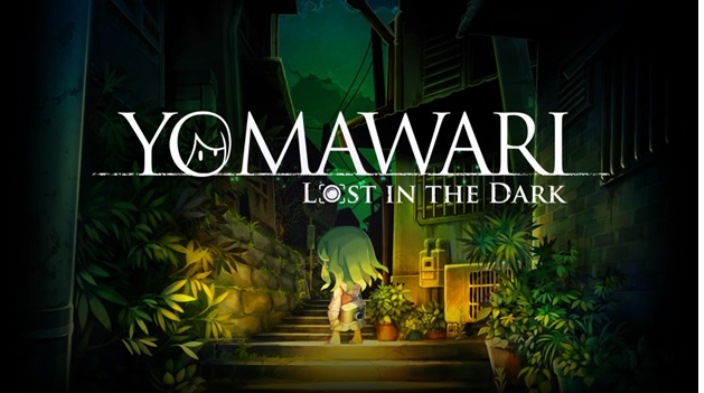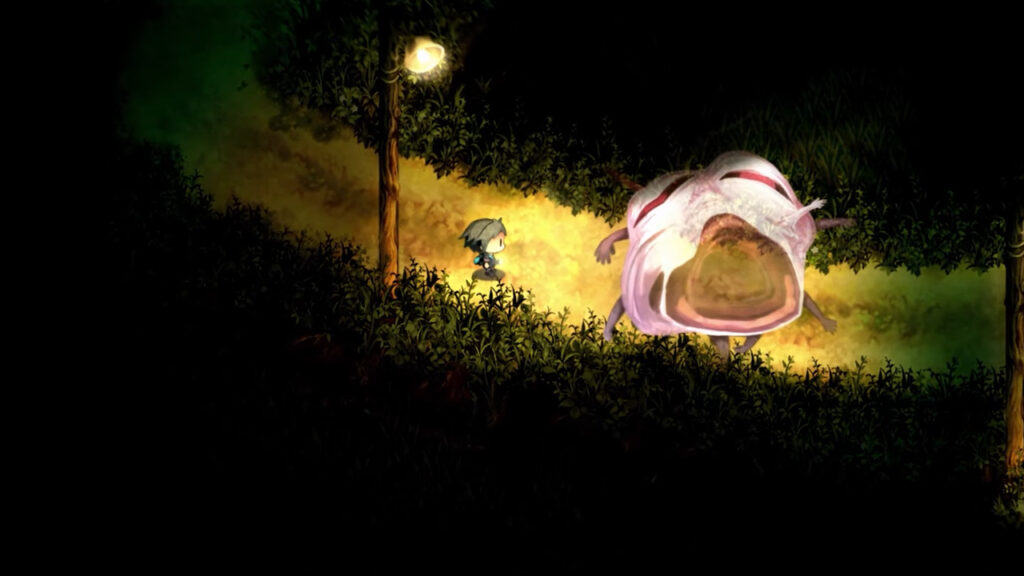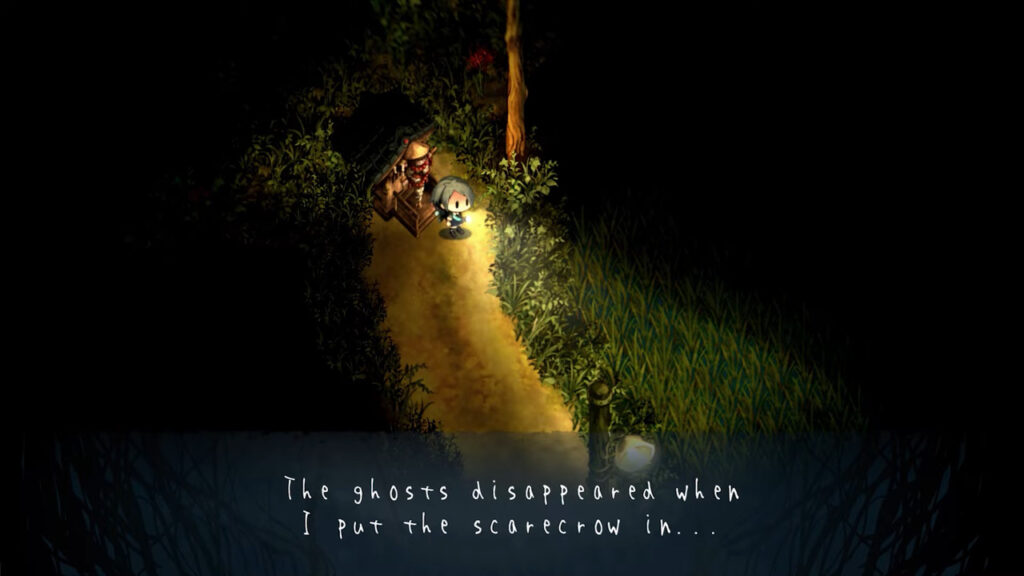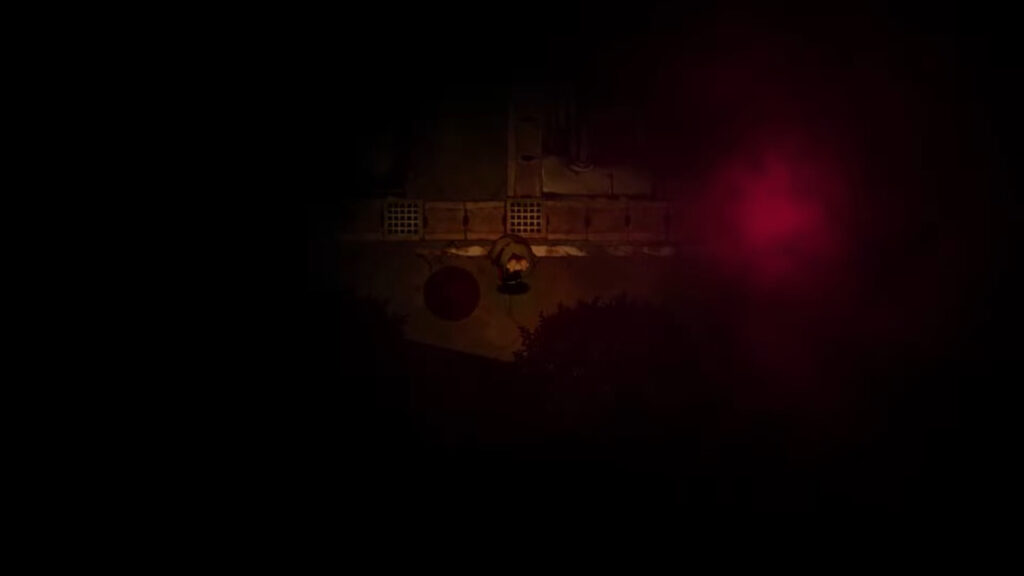
Developer: Nippon Ichi Software
Publisher: NIS America
Platform: Switch, PC, PS4
Tested on: Switch
Yomawari: Lost in the Dark – Review
It has been four years since the Yomawari series made itself heard, with a bundled rerelease of 2015’s Yomawari: Night Alone and 2016’s Yomawari: Midnight Shadows. NIS’ horror series now makes a return with Yomawari: Lost in the Dark, a brand new title rather than yet another rerelease. While yours truly wasn’t familiar with the Yomawari games, fellow reviewers over here on 3rd-strike highly praised the previous releases, so we were more than eager to give Lost in the Dark a shot. Is this new entry a triumphant return or should the Yomawari series have stayed dormant?
Story
Rather than relying on gruesome monster designs or cheap jump scares, Lost in the Dark’s horror is mostly derived from its unsettling atmosphere. Nowhere does this come across more clearly than through the main story. Told with only the bare minimum of words, Lost in the Dark attempts to convey the struggles and emotions of protagonist Yuzu by putting her in universally recognizable uncomfortable situations. The game’s opening stage immediately sets the tone: Set in a gritty Japanese high school, we meet Yuzu as she is making her way from the bathroom to class. Along the way, she is bullied by her classmates. In the span of a few minutes, she receives notes calling her an idiot, a basketball is thrown at her head, a bucket is dropped on her when she enters the classroom, and her desk and chair are covered in graffiti. When her classmates force her to eat a worm, Yuzu finally breaks down and runs to the roof of the school. The camera pans upwards to reveal the game’s title and when it pans down again, our heroine is gone and the roof is empty, implying that she took her own life by jumping down.
Yuzu finds herself in a mysterious forest and this is where Lost in the Dark begins in earnest. She suffers from amnesia, having no idea where she is and how to get home. After a bit of aimless wandering, Yuzu runs into a spirit who tells the girl that a curse has been placed upon her. Yuzu must piece together her memories before 6 am to find a way home. If she fails, the curse becomes permanent and she’ll never be able to leave the area. This is easier said than done, of course, as the place she finds herself in is filled with unfriendly spirits and other otherworldly entities. The story that unfolds from this point on is both unsettling and touching at the same time. It’s heavily implied, but never made entirely clear, that Lost in the Dark’s storyline takes place inside of Yuzu’s head, as a way of coping with the bullying that she endures in real life. The story is definitely filled with heavy themes and although Lost in the Dark isn’t the most challenging title in terms of gameplay, it may still be difficult to get through because of how heartbreaking and uncomfortable the story can get at times.
Graphics
For most people, the word ‘adorable’ doesn’t immediately come to mind when describing a horror game’s visuals. Lost in the Dark is an exception to this, with its chibi-like character designs and non-scary monsters. As the story unfolds, Yuzu finds herself visiting a wide variety of gorgeously designed environments, from the forest to a residential area. These are not just brought to life through intricate details, but also through absolutely amazing lighting effects. Yuzu’s appearance can also be customized, although we did feel like the available options were a bit limited, especially given how simplistic the character designs are in the first place.
Sound
When you begin a new game of Lost in the Dark, you are greeted with a message from the developers, asking you to use headphones. This ties into specific gameplay mechanics, and we’ll get to those a bit further down in this review. Even discounting the way audio is used as a gameplay element, we’d say that headphones are a must here, because Lost in the Dark is a game with a very layered soundscape. The environmental ambiance and specific sound effects aid in putting the player in Yuzu’s shoes, from the hustle and bustle of the high school hallways to the haunting sounds of a dark forest. The game also masterfully uses music to great effect. The soundtrack is very understated most of the time, only taking the front stage when necessary. This becomes especially clear during the heartbreaking scene where Yuzu runs to the rooftop of the school and piano music starts playing, further underlining how heartbreaking this moment is. The game lacks voice acting, but the soundscape is handled so well that we’d go as far as to say that we didn’t miss voices this time around.
Gameplay
Given that Lost in the Dark is billed as a survival horror game first and foremost, we had specific expectations when it came to gameplay. However, Lost in the Dark isn’t your standard horror game in the same vein as Resident Evil or The Quarry, to name a few. Granted, there isn’t a definitive horror game template, but Lost in the Dark breaks the mold in more ways than we imagined. This is a unique, slow-paced atmospheric experience, where Yuzu needs to find her way home through some genuinely unsettling scenarios. Before Lost in the Dark begins, a handful of warning messages are displayed, in order to discourage people that suffer from anxiety, panic attacks, or similar conditions from playing the game, something that reminded us of the similar warnings that accompanied Doki Doki Literature Club Plus. These warnings definitely aren’t out of place as the horror of Lost in the Dark is slow and really gets under your skin.
In order to find her way home, Yuzu must recover her memories by obtaining items. This puts her in a wide variety of scenarios, all of which are tied to her inner struggles in one way or another. These range from helping a pack of ghost dogs to track down their killer to a situation tied to the traditional trope of the seven mysteries. Our heroine only has limited tools to deal with these situations: her trusty flashlight as well as different bell sounds and heartbeat noises that guide her to where she needs to go. Avoiding evil spirits typically involves Yuzu closing her eyes as she makes her way through the darkness relying only on sound. The way this is implemented is perhaps the best gameplay element that Lost in the Dark has to offer. Players need to keep Yuzu’s eyes closed by holding down buttons, and the temptation to let go and ‘sneak a peek’ is always there. The closer a spirit gets, the harder Yuzu’s heart starts to beat and although the environment darkens around her, you can still ‘see’ the spirits in the form of shapeless red clouds which you’ll need to avoid.
The game spends perhaps a bit too much time on narrative segments that flesh out the situations that Yuzu has to deal with, but given that the story is soaked in Japanese folklore, we can forgive this. A lot of the spirits that our heroine encounters aren’t necessarily well-known among Western audiences, so explanations are necessary even if they do interrupt the game’s already slow pace. Admittedly, this is made worse by the game’s unnecessary reliance on backtracking and the awful save system. In order to save the game, you’ll need to either track down a Jizo statue and use a coin to “buy” a save or make your way to Yuzu’s bed where you can save your game for free. Combined with how fragile Yuzu is and how easy it is to slip up and make a mistake, death comes easily in Lost in the Dark. Because of this, you’ll find yourself having to replay certain gameplay segments over and over again from the last save point, which can get somewhat frustrating.
Needlessly annoying save system aside, Alone in the Dark is a well-designed game. Each individual scenario is immaculately designed, with fantastic puzzles. Exploring the various environments feels natural without any forced hand-holding or railroading. Despite the narrative pressure put on Yuzu to complete her quest before time runs out, the game itself encourages exploration. It’s a non-linear experience, allowing you to tackle the various scenarios at your own pace, and there are optional secrets to discover. Given that this isn’t a game all that suited for replayability, due to how it is paced, you’re much better off taking your time to find everything instead of going in for a second or even third run. It’s not a particularly long title, clocking in at roughly 18 hours worth of content for your €39.99/$39.99, so you might as well make the best of that single run.
Conclusion
We can’t compare Lost in the Dark to the other two Yomawari titles, as we haven’t played them, but as a newcomer, we can definitely say that this is a horror game worth seeking out. We could have done with a more forgiving save system and there was a bit too much backtracking for our liking, but the game gets so much right that it’s easy to overlook these grievances. The atmospheric horror is surprisingly effective, to the point where we do believe that the warnings that precede the game are necessary. If you’re looking for a horror title that is genuinely unsettling, then Lost in the Dark is definitely worth a shot.










No Comments